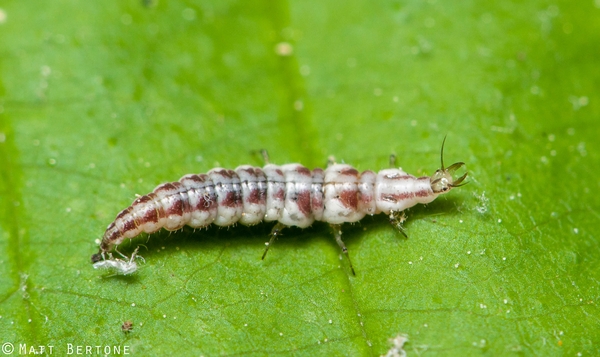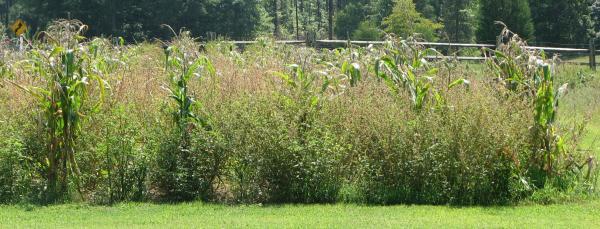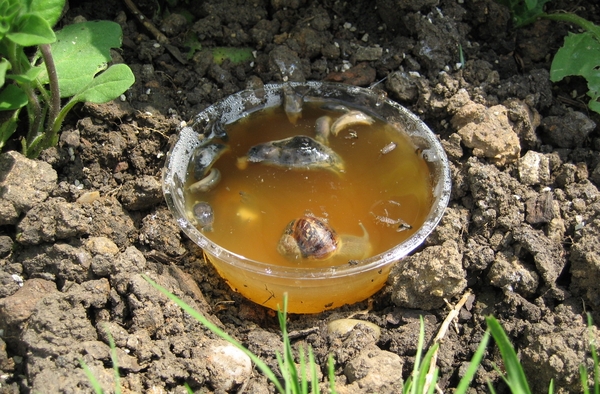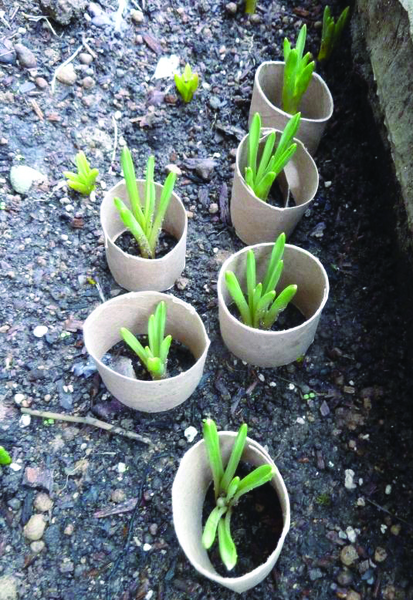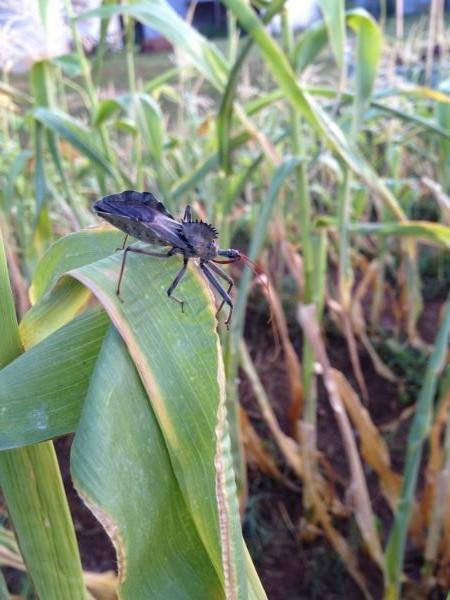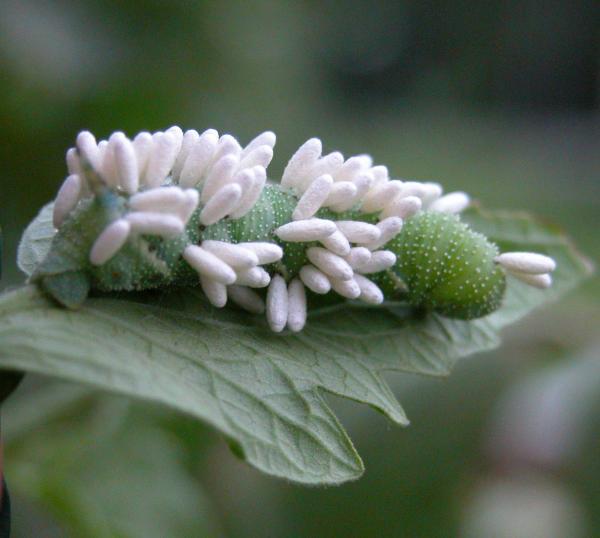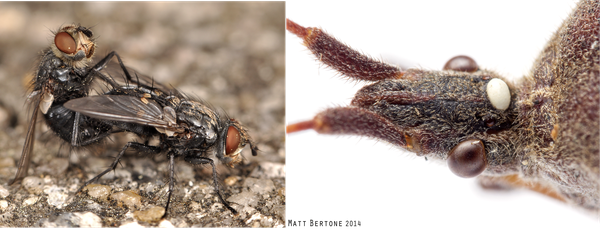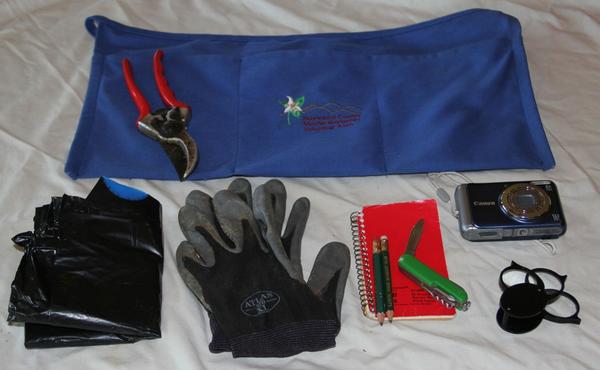Outline
Pests as Part of a Natural System
Limitations of Cultural Management
Limitations of Mechanical Management
Limitations of Biological Management
Limitations of Chemical Management
Appendix B. Pesticides and Pesticide Safety
Objectives
This chapter teaches people to:
- Be able to analyze pest problems, determine if management is necessary, and make appropriate recommendations using IPM techniques.
- Be familiar with different methods of pest management - their benefits and limitations.
- Understand the value of beneficial insects.
Introduction
It is not possible—or even desirable—to rid gardens of all pests. Monitoring and managing pest levels instead of eliminating pests can preserve the environment, reduce costs, protect the health of humans and animals, and maintain beneficial organisms such as birds, bees, butterflies, predaceous bugs, and other pollinators. This chapter discusses integrated pest management (IPM), an approach that uses knowledge about pests and their life cycles, cultural practices, nonchemical methods, and pesticides to manage pest problems. Additional information about IPM for specific plants is included in chapters that concentrate on those plants. Nonchemical pest control measures are stressed in chapter 17, “Organic Gardening.” Managing birds and mammals is covered in chapter 20, “Wildlife.” Managing weeds in the yard and garden is covered in chapter 6, “Weeds.”
Pests as Part of a Natural System
Pests in a garden or landscape may include insects and mites, weeds, plant diseases, mammals, and birds. It can be tempting to look for a quick solution to an insect feeding on a garden plant. Many people hurry to pull, hoe, or spray every weed they see. Insects and weeds, however, play a role in the ecosystem. After planting a garden or establishing a lawn, the natural process of plant succession begins to reestablish native and nonnative plants. A weed growing in a lawn represents the first stage in a sequence of events that, if allowed to continue, could eventually result in a forest. Many cultivated plants are not as competitive as many of our natives, weeds, or pests; cultivated plants survive only with the constant help and intervention of the gardener.
What we call "pests" are part of a natural system at work. An ecosystem has no pests. Only humans consider certain species pests when they occur where they are not wanted. We will be more successful in managing unwanted species when we realize that these organisms follow predictable patterns that we can use to our advantage.
IPM Approach
When modern pesticides were first developed, they were used extensively. Pests susceptible to a pesticide were quickly killed, leaving resistant ones to breed and multiply. It became clear that pesticides alone would not solve all pest problems. Instead, overuse of pesticides caused the development of resistant pests. Scientists began to develop a new approach to pest control. This new approach was described as integrated pest management (IPM). Integrated refers to the fact that all control measures (mechanical, cultural, biological, and chemical) are considered and used as appropriate. An IPM plan allows some level of pests in the environment. Pests are much less likely to survive a program that uses many different methods of reducing their populations.
Integrated pest management was first suggested by entomologists because insects were the first group of pests to prove difficult to manage with chemicals alone. Early proponents of IPM suggested using five basic strategies to improve insect management:
Step 1. Monitor and scout insects to determine insect types and population levels.
Step 2. Identify pest and host accurately.
Step 3. Assess and consider economic or aesthetic injury thresholds. A threshold is the point at which action should be taken.
Step 4. Implement a treatment strategy using mechanical, cultural, biological, or chemical controls, or a combination of these strategies.
Step 5. Evaluate success of treatments.
IPM has extended beyond insects to management of all pest populations: weeds, disease organisms, and mammals. Integrated pest management regulates pests by using a variety of control measures, including mechanical, cultural, biological, and chemical. Management rather than eradication of pests is the goal.
An IPM plan begins with a careful evaluation of each pest infestation. Only then can one decide about the appropriate tactics necessary to suppress pest activities. The life cycle of the pest, possible damage, natural enemies, and effects of weather, among other factors, are considered before a control plan is implemented. For example, weeds like Queen Anne’s lace (Daucus carota) or London rocket (Sisymbrium irio) can harbor beneficial insects such as lacewing or lady beetle larvae that help keep aphid and other pest populations at acceptable levels (Figure 8–1). Clover growing in a lawn may be viewed as an unwanted weed, but as a legume it is synthesizing nitrogen for the soil and the flowers are providing nectar to honey bees and other pollinators. Tolerance for some weeds may be part of an IPM plan. Caterpillars may be eating the leaves of a plant, but when they are identified as the larvae of Eastern tiger swallowtail butterflies, their damage may be tolerated so we can enjoy the beautiful butterfly. A woodpecker may be putting holes in the trunk of a peach tree, but at the same time it is eating insect larvae that may do more damage to the tree. See “Weeds,” chapter 6; “Insects,” chapter 4; and “Wildlife,” chapter 20, for more information.
Pesticides may be an attractive option for homeowners because the formulations can be inexpensive, easy to use, and can provide quick results. However, they often also impact beneficial insects and other non-targeted organisms. An IPM plan may be slower to show results and could require more effort than spraying a chemical, but the reduced impact on the environment can be worth the investment. The more gardeners learn about biological and ecological processes, the more imaginative they will be in formulating and implementing IPM plans.
Pest Management
Prevention is the first tool in pest management because it is the most effective, least expensive, most environmentally friendly solution. Choosing a healthy plant that thrives in the desired location with the available light, planting it carefully, and ensuring that it has adequate water and nutrients prevents stress and minimizes pest problems. Stressed plants can attract pests. The second most important tool in pest management is early intervention. Being present and observant in the garden ensures early detection. Reacting to problems quickly, before they have time to multiply, requires a less dramatic intervention. The third most important tool is recordkeeping; tracking what happens in the garden enables a gardener to recognize patterns and make informed decisions. Record planting dates, varieties, purchase location, dates of problem onset, weather conditions, management strategies and their effectiveness, and other kinds of information that help you to recognize relationships and form gardening strategies.
Many safe, practical, nonchemical methods of plant protection and pest management may reduce or eliminate the need to spray. Other methods are most beneficial when used with pesticides. To implement management practices correctly and to minimize losses, gardeners should be aware of the types of pests that attack plants and understand pest biology. Scouting methods, equipment selection, timing, and other pest management practices all depend on an accurate knowledge of the pest. Pest management methods fall into four groups: cultural, mechanical, biological, and chemical.
Cultural Management
Keeping plants healthy and preventing plant stress helps plants to better withstand and repair the damage caused by an insect or mite pest. Some evidence indicates that healthy plants resist infestation by pests better than plants with low vigor. The most effective and most important of all practices is to observe what is going on in the garden. Many serious disease or insect problems can be halted or slowed by regularly visiting the garden, knowing what to look for, recognizing potential problems, and intervening early. Cultural methods of suppressing insect and mite problems in the landscape include preparing the soil; choosing plants that are adapted to the site conditions, that are not attractive to pests, and that are tolerant of insects and diseases; rotating crops; interplanting; timing planting dates to avoid pests; managing weeds; and planting "trap" crops.
Soil Preparation
Providing a favorable soil environment encourages the growth of healthy roots, increasing access to water and nutrients, preventing stress, and making the plant more resistant to pests and diseases than plants in poor soil. Conducting a soil test and applying only the recommended amount of fertilizer and lime maximizes the benefit to the plant while minimizing problems related to excessive use of fertilizer. Covering the soil with several inches of organic mulch protects the plant in several ways: reducing soil water loss to evaporation, minimizing weed competition, providing nutrients, and creating a suitable environment for earthworms and microorganisms that keep the soil loose for roots and break down organic material to release nutrients.
Keep organic mulch, pine straw, or wood chips a few inches from the trunk of a plant when the mulch is installed (Figure 8–2). If mulch touches the trunk, it can create a way for voles, bacteria, and fungi to attack the plant. Do not use manure or compost that has not thoroughly decomposed as a top dressing because it can encourage undesirable pests.
Research suggests that tilling the soil is detrimental to soil structure. Read more about tilling in “Soils and Plant Nutrients,” chapter 1. If tilling is deemed necessary, consider doing it in the fall when the life cycles of many pests brings them near the surface. At the surface, pests become exposed to the weather as well as birds and other natural enemies. Fall tilling can also destroy insects in crop residues.
Plant Selection
Use disease-free and insect-free certified seeds and plants if available. Select plants that are sturdy and have well-developed root systems. Diseases and insects in young seedlings can start in greenhouses or plant beds and later cause heavy losses in the garden when the pests are introduced along with the seedlings. Whiteflies are an example of an insect that is easy to overlook on nursery stock (Figure 8–3). Always buy plants from a reputable grower who can assure their plants are healthy. Avoid accepting plants from friends if there is any chance of also getting insects or diseases. Examine plants carefully (tops of leaves, bottoms of leaves, stems, and soil) before planting to be sure they are clean. Consider planting cultivars identified as resistant to pests.
Resistant cultivars are those that repel, are unattractive to, or otherwise are unsuitable as food for certain pests or that withstand feeding by certain pests with little reduction in yield or quality. Some cultivars may not taste as good to the pest. Some may possess certain physical or chemical properties that repel or discourage insect feeding or egg laying. Genetic engineering offers potential for incorporating genes into plants that reduce a plant’s susceptibility to insect attacks.
By choosing plants carefully, gardeners can avoid some common pest problems. For example, when choosing hollies for landscaping, one could choose native hollies such as yaupon (Ilex vomitoria), winterberry (Ilex verticillata), or American holly (Ilex opaca) instead of Japanese hollies, which are much more susceptible to southern red mites. When selecting a squash to grow in a vegetable garden, butternut squash is a good option because it is resistant to squash vine borer. If deer are a problem in a garden, choose a plant that is naturally resistant to deer predation over a plant that is more attractive to deer. For example, a native downy hawthorn (Crataegus mollis) would be a better choice than an Eastern redbud (Cercis canadensis).
Rotation
Planting two similar crops in successive years tends to increase pest problems. Many vegetables are closely related and have the same pests and diseases. Some insects hibernate in the soil or litter around plants or lay eggs in or on the host plant. Do not grow the same kind of vegetable in the same place each year (Figure 8–4). Use related crops in a site only once every three or four years. The rotation period for avoiding some tomato diseases may be five to seven years. Another type of crop rotation is to avoid planting root crops in consecutive years in the same row. Crop rotation is most effective on pests that develop on a few plants.
Interplantings
Avoid placing all plants of one kind together; instead spread them throughout the garden (Figure 8–5). Consider alternating groups of different plants within rows or patches. Insects that become severe on cabbage probably also infest nearby mustard, broccoli, and collards, but they may not spread to cabbage planted on the other side of the garden. If an insect lays eggs or otherwise attacks a species, the presence of unrelated plants in the area can interrupt the attack’s progress by diluting the attractive odor of the preferred plants. Interplanting can also slow the spread of diseases, giving the gardener more time to develop a management strategy. Marigolds and garlic are two plants recommended as insect repellants; however, most of these recommendations are unproven. In some cases, the evidence indicates these plants are not effective repellants.
Planting Dates
Some insects do not overwinter locally but migrate from southern states each year. Time plantings so that most of the crop avoids the peak of insect infestations. Early squash should reach maturity before the pickleworm arrives. Plant squash seeds or seedlings as early as possible in the season to avoid borers, which lay eggs in July. Early plantings of sweet corn may reduce occurrence of corn earworm, especially if crops are harvested before July 15. Delay planting warm weather crops until after the soil has warmed to avoid seed and root rots and promote vigorous growth. Keep a record of planting dates, where plants or seeds were purchased, and the dates insect problems occur.
Weed Management
Weeds and grasses can harbor both pests and beneficial insects. Spider mite problems are fewer, for example, if broadleaf weeds near fruit trees are removed. If the weeds are closely related to the crop plants, they can harbor pest insects and should be removed. Pests with a wide host range—such as armyworms, crickets, cutworms, flea beetles, grasshoppers, lygus bugs, slugs, snails, stink bugs, and thrips—often inhabit weedy areas and can move to nearby desirable plants. Before planting, mow weedy areas and continue to mow on a regular basis. It is important to mow weeds before a crop is established to prevent insects from moving to the desirable plants. Weeds can be a forage, nectar, or pollen source for beneficial organisms. Milkweed (Asclepias spp.) is the larval plant to the monarch butterfly. Weeds that attract insects can be a feeding ground for birds. Finches and pine siskins eat the seeds of goldenrod (Solidago spp.) as well as any insect this plant attracts. The flowers of thistle, plantain, knotweed, and dandelion are important to honey bee populations. Removing weeds after flowering but before seed set provides food for the honey bees but keeps the weeds from continuing to spread.
Trap Crops
Another way to manage insect pests is to plant a crop that is very attractive to insects and then treat the trap crop with insecticide. Trap crops for Japanese beetles include soybeans, zinnias, or white roses. Radishes, turnips, or mustard plants attract harlequin bugs; radishes attract corn and cabbage maggots; and sunflowers attract Lygus plant bugs.
Limitations of Cultural Management
The use of cultural controls for pest management requires advanced planning on the gardener’s part. Although it may sound simple to plant resistant landscape plants or vegetable varieties, these varieties must be located and purchased in advance. In some cases, varieties may not be available locally but special orders can sometimes be placed at a nursery or ordered online.
Crop rotation is a valuable cultural method for reducing insect and disease issues, but many gardeners do not have the room to sufficiently implement this practice. Where space is limited, it may be best to allow the garden to lay fallow for a year or two or more. Consider raised beds with new soil or plant in containers when you know a disease problem exists. At the very least, skip growing the crops, and crop families, that have experienced pest issues.
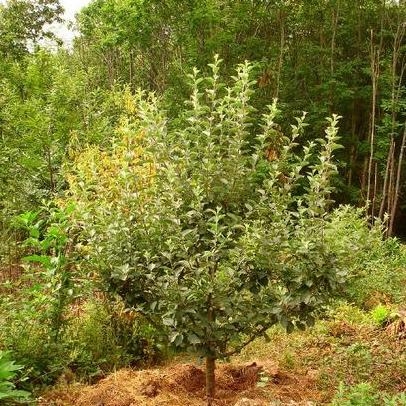
Figure 8–2. Leave a few inches of space around the trunk of the plant when mulching.
hardworkinghippy : La Ferme de Sourrou CC BY-SA 2.0

Figure 8–3. Always check the undersides of leaves at the nursery. Note the high density of whiteflies under this tomato leaf.
Scot Nelson Flickr CC0
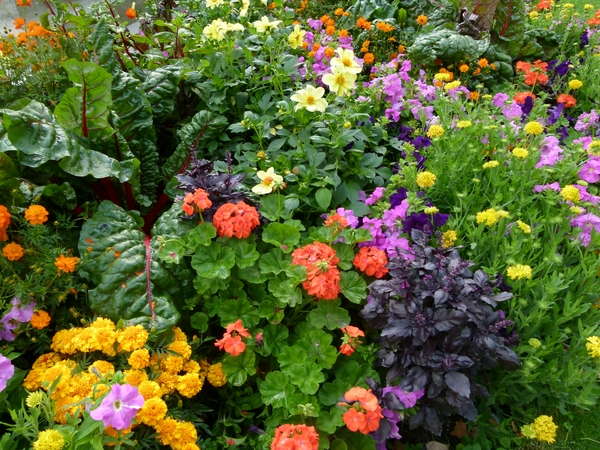
Figure 8–5. Interplanting chard, kale, and basil with herbaceous ornamentals helps reduce pest and disease build up.
Dinkum, Wikimedia Commons CC0
Mechanical Management
Handpicking
Inspect plants regularly for eggs, immatures, or adults. Many insects are beneficial (Figure 8–6). If they are identified as harmful to the plant handpick as many as possible (Figure 8–7). Almost any large non-venomous pest can be picked off at any stage. To avoid the task of hand-squashing the pests, knock the insects and egg clusters into a coffee can or quart jar with a small amount of water and a bit of dish detergent.
Traps
Insect traps can assist with detection and management. Use caution, however, as many traps are of limited use or may lure pests to the garden. Light traps, particularly black light or blue light traps (which emit ultraviolet light that is highly attractive to nocturnal insects), are good insect monitoring tools but provide little or no protection for the garden. While they usually capture a tremendous number of insects, a close examination of light-trap collections shows that light traps attract both beneficial and harmful insects that would ordinarily not be found in that area. Those insects attracted but not captured remain in the area, and the destructive ones may cause damage. Also, these traps do not catch some wingless species, as well as those species active only during the day (diurnal) as opposed to active during the night (nocturnal).
Pheromone traps are used for detecting the presence of pests or sometimes for disrupting insect mating habits. Adult females produce and release a chemical odor attractive to males of the same species. Traps are "scented" with these odors. Rainfall, cool temperatures, wind speed, and wind direction can reduce the lures’ effectiveness. Heat, sunlight, or improper storage can damage scented lures. The best success occurs when the pest density is low and movement into the area is minimal.
Some physical traps are easy to make from materials around the home. A shallow tin of beer partially embedded in the soil makes an effective trap for slugs (Figure 8–8). Slugs hiding under slightly propped boards during the daylight hours should be removed and disposed of daily.
Yellow plastic dishpans filled with soapy water can attract aphids. Yellow sticky traps made with boards painted yellow and lightly coated with oil or grease catch whiteflies and cucumber beetles (Figure 8–9). Commercial sticky traps are available through some catalogs.
Barriers
Mechanical barriers can help to exclude some pests but are not effective if the pest population is large. Aluminum foil and other reflective mulches can repel aphids. Crushed eggshells or hydrated lime spread around plants discourages slugs. Copper tape can be an effective barrier for slugs (Figure 8–10). While heavy mulch is good for weed management, it gives slugs a place to hide.
Collars made of cardboard, tin cans, or aluminum foil and inserted halfway into the soil are effective barriers to cutworms (Figure 8–11). They prevent cutworms from being able to feed on seedling stems. Use of screening around potato storage areas can prevent the entry of tuberworm moths. Mounding soil around grapevines can prevent the emergence of grape root borer moths.
Cheesecloth screens for cold frames and hot beds prevent insects from laying eggs but also reduce light. Floating row covers of spun polyethylene are a little more expensive, but they can be quite effective at excluding insects (Figure 8–12). Many commercial growers use them, particularly on cole crops and strawberries. Sticky barriers on the trunks of trees and woody shrubs prevent damage from some crawling insects.
Kaolin clay, sometimes referred to as “China clay,” can be used to form a thin film on leaves and fruit and can protect plants from Colorado potato beetle, tarnished plant bug, leafhopper, mite, thrips, flea beetle, and Japanese beetle damage. This film irritates the bodies of insects and reduces their feeding. Mix 1 quart of clay with 2 gallons of water and 1 tablespoon of liquid soap in a sprayer. Continuously agitate the sprayer to prevent clumping of the clay. Reapply every one to three weeks. This barrier is preventive; it will not work if an insect pest is already established.
Net-covered cages over young seedlings help prevent insect, bird, and rabbit damage. Using wire collars around tree trunks may prevent damage from bark eating mammals such as voles. Bird netting can be draped over fruiting plants to prevent predation when fruit is ripe. Use paper bags to cover ears of corn to keep birds and insects out. Be sure to wait until pollination is complete before bagging ears. Electric fence barriers prevent large mammals such as deer or raccoons from feeding on plants, though fences can be expensive and time consuming to install.
Pruning and Raking
Some pests, such as the azalea stem borer and the dogwood club gall (Figure 8–13), can be managed by pruning infected twigs out of infested plants and destroying them. If twigs infested with dogwood twig borers are pruned in late spring or early summer, the plants should still bloom without any problem the following spring. However, if infested twigs are removed in late summer, a larger portion of the branch must be removed (the larvae bore inside the stem), and the plant will not have time to set new flower buds before winter. Raking the fallen twigs of pecans, oaks, elms, hickories, and other shade trees in the fall removes the larvae of twig girdlers. These long horned beetles overwinter as eggs or grubs in fallen twigs. New beetles emerge during the following fall to lay eggs. Camellia leaf gall, caused by Exobasidium camelliae, is kept under control by removing infected leaves before the fungus matures to its reproductive stage.
Water Sprays and Irrigation
Aphids and other insects often feed on the underside of leaves. Spraying infested plants with a strong stream of water dislodges and kills many spider mites, aphids, and other relatively fragile insects. Rain is one of the greatest natural management strategies for spider mites; populations tend to build up during dry weather. Cool, cloudy weather promotes fungal pathogens which attack chinch bugs, spider mites, aphids, and other pests keeping populations low. Proper irrigation can help reduce the likelihood of pest problems.
Hose adapters can be purchased that have a motion sensor and can spray a stream of water at an animal such as a squirrel, deer, or raccoon. These are most effective if pointed at a specific area needing protection, such as a vegetable garden bed.
Properly irrigated plants are able to better withstand damage from pests. A well-watered, healthy lawn can naturally out-compete weeds. A tree that is not experiencing water stress is able to withstand some root predation from voles or twig predation from deer.
Heat Treatment
It is possible to use propane flamers to kill Colorado potato beetle larvae on potatoes without killing the plant. In addition, flames can be used to kill annual weeds. Extreme caution should be used when using fire in the garden. Some hot water treatments can be used to reduce disease when saving seed.
Frightening Devices
Frightening is a tool that can vary greatly in its effectiveness. It requires knowledge of the pest and vigilance so the pest is not desensitized to any one technique. Frightening devices include: reflective objects, noise makers, human or predator effigies, lights, lasers, pyrotechnics, guard animals, and ultrasonic devices. When using a frightening device, it is important to consider the pest's ability to see or hear the stimulus. Many birds have excellent eye sight, so a scarecrow may deter starlings from a yard if moved frequently (Figure 8–14). Lighting a garden at night and playing a radio can be effective in deterring raccoons but does little to stop small rodents. Insects do not register sight and sound the way birds and mammals do, so frightening is not a technique used in insect management.

Figure 8–6. These tiny white eggs suspended on a stalk are laid by lacewings. Lacewings are beneficial insects whose larvae voraciously consume aphids and other soft-bodies pests.
JKehoe_Photos, Flickr CC BY 2.0
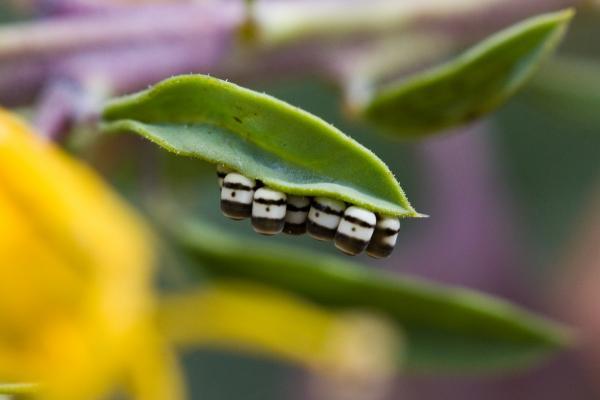
Figure 8–7. Harlequin bug eggs on the underside of a leaf. Harlequin bugs are a pest to the cabbage family, and their eggs should be removed.
N. Ichi Ueda CC BY-NC-SA 2.0

Figure 8–9. A yellow sticky trap captures the adults of whiteflies, cucumber beetles, fungus gnats, and other winged insects. This interrupts their life cycle and helps manage these pests.
Mike Linksvayer, Flickr CC0
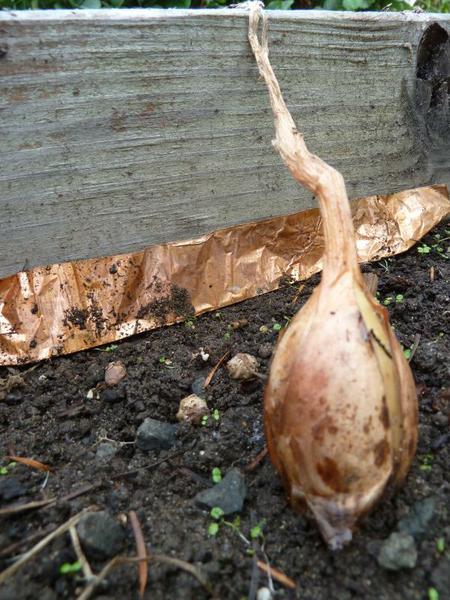
Figure 8–10. Copper tape can be an effective barrier for slugs, but beware of sharp edges. This is most practical for small garden beds or containers.
Kathleen Moore CC BY 2.0
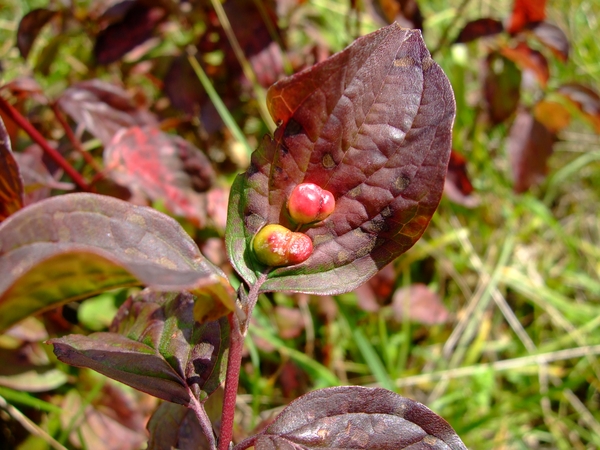
Figure 8–13. Dogwood club galls should be pruned off and destroyed as a means of managing midges.
Sally Jennings (NATT-at-NKM), Flickr CC BY 2.0

Figure 8–14. A scarecrow is one type of frightening device. For it to be effective, it needs to move around the garden often.
Kathleen Moore CC BY 2.0
Limitations of Mechanical Management
Mechanical methods require time and can be more practical for small gardens. For example, the use of row covers to exclude pests can be effective. Depending on the size of the garden, however, it may be a large expense and time investment to place the row covers, remove them to allow for pollination, and replace after pollination. Handpicking also has limitations. Once crop damage is noticed, it might be too late for handpicking to be effective. This is why observing is so important to any IPM strategy. Actively monitoring the crops and looking for the first signs of damage keeps the insect populations at a level that allows handpicking to be successful.
Biological Management: Use of Predators, Parasitoids, and Pathogens
Biological management is the process of reducing a pest population by using predators, parasites, or disease organisms that ordinarily occur in nature. The greatest single factor in keeping plant-feeding insects from overwhelming the rest of the world is that they are food for other insects.
Insect and mite populations are usually relatively concentrated. Thus, one or two lawns in a neighborhood may have copious numbers of millipedes or green June beetle grubs while a lawn two houses away may have almost none. When pests become numerous, parasitoids and predators are attracted to them and reduce the pest species in that area. The parasitoids and predators then disperse to seek out more prey.
Parasitoids and predators are available through garden catalogs and gardening magazines, but some insects sold as biological control agents—such as praying mantises and lady beetles—are not very effective for home gardeners. This is because they are either highly mobile (lady beetles) or nonselective, eating as many beneficial insects as pests, and potentially cannibalistic (praying mantises). It is far more effective to create an environment that attracts and supports naturally occurring predators and parasitoids. Tolerate some pests in the yard; look at them as food for the beneficial insects. If beneficial insects have no food, they move to another location. Minimize the use of pesticides that can kill beneficial insects as well as pests.
Predators are insects (or other animals, such as spiders, frogs, and birds) that catch and devour other creatures (called prey), usually killing and consuming them in a single meal. The prey are generally smaller and weaker than the predators. Predators are typically very active and have long life cycles. Some examples include ground beetles, lady beetles, lacewings, wheel bugs (Figure 8–15), hover flies, and predatory mites.
Parasites are organisms that live on or in the body of a living organism (called a host) from which they get their food during at least one stage of the parasite’s existence. The parasite can gain enough nutrients and resources to survive without killing the host or preventing it from reproducing. Parasites tend to have a very short life cycle. Some examples include nematodes, fleas, and ticks. Biological control parasites are quite different: they are close in size to their hosts, they live about the same length of time, most are incapable of reproducing in or on their hosts (they require a free-living period), and they usually kill their hosts. For this reason, the term parasitoid was coined in 1913 to describe those insects, such as ichneumonid wasps and tachinid flies, that parasitize and kill other insects.
A parasitoid is an organism that gains nutrients and resources from a host and ends up killing or sterilizing the host in the process. There are two major categories of parasitoids. Ectoparasitoids attach themselves to the outside of a host and feed by sucking body fluids through the host’s skin . Endoparasitoids have eggs that are deposited by an adult female inside the body of a host. The eggs hatch, and the larvae consume the host from the inside (Figure 8–16 and Figure 8–17). The most common parasitoids are found in the Hymenoptera and Diptera orders. Some examples of parasitoids are parasitic wasps and tachinid flies (Figure 8–18). The adults feed on nectar, pollen, or honeydew. Many adult parasitoids are very tiny, so they may be overlooked in a garden. But they play an important role in keeping some pests populations under control. Sometimes parasitoids fail to appear even when many pests invade a landscape, several acres, or even hundreds of acres. This happens when environmental conditions are favorable for the pests but not the parasitoids, or when new pests invade a region where there are few or no natural predators. Japanese beetles and gypsy moths, for instance, are harder to manage because they are introduced insects that do not have naturally occurring predators, parasitoids, or pathogens to keep their populations under control.
Beneficial nematodes feed on insects such as cutworms, squash vine borers, pillbugs, grubs, fungus gnats, root weevils, and armyworms. Effective use of beneficial nematodes requires knowledge of the nematode and the insect that warrants management. Producers ship beneficial nematodes in the form of gels, dry granules, clay, and water-filled sponges. All of these forms dissolve in water. Nematodes are sensitive to ultraviolet light, heat, and dehydration. The best time to apply is early morning or late afternoon when light and temperatures are lower. Because nematodes move in the soil on the film of water that surrounds soil particles, the area should be watered before releasing nematodes or lightly watered afterward. High-nitrogen fertilizer can reduce nematode effectiveness, so producers recommend not applying fertilizer for two weeks before or after releasing nematodes.
Pathogens are disease-causing organisms, including viruses, bacteria, and fungi that kill or debilitate their hosts. They are usually specific to certain insects.
The most successful example of biological management is the use of bacteria to kill caterpillars. Bacillus thuringiensis (Bt) is a bacterium that produces a toxin that destroys the midgut of an insect. Several formulations are available that provide effective management of more than 400 insect speices without harming people or domestic animals. For example, Bt israelenisis works on mosquitos and Bt kurstaki work on Lepidopterans. Be sure to use the proper strain for the pest under management.
Bacillus thuringiensis is quite slow in its action. For example, caterpillars that consume some of the spores stop eating within two hours, but may continue to live and move around until they die, which may be 72 hours later. When this occurs, the untrained gardener may assume the material was ineffective because of the continued pest activity and impatiently apply a chemical pesticide. Some insects have developed resistance to Bt because of its overuse on some crops.
Nosema locustae is a disease organism that shows some promise for managing grasshoppers. There are claims that these fungal microsporidium may be effective for up to five years after initial application. In some areas, this pathogen is available commercially under different trade names. It is still too early to make extensive claims about its effectiveness in home gardens.
Limitations of Biological Management
Biological management can be an effective means of killing harmful pests. Timing, however, can be a challenge. For instance, a pest may be identified for which a predator is commercially available, but by the time the predator arrives and the plant is treated, an unacceptable amount of damage may have already occurred. If the predator is ordered beforehand, it must be stored until the pest appears, and the predator may have a short shelf life.
Purchased natural predators are often effective for only a short period because they tend to move out of the area in which they are released. For example, some species of the western lady beetles sold for biological management instinctively fly long distances after hibernation to reach a source of aphids. Thus, when lady beetles from California find themselves released into a yard in North Carolina, they automatically fly far away before they begin to feed. Natural predators can be very effective in greenhouses where they are held captive.
Chemical Management
If the pest has been correctly identified and is still a problem after other management strategies have been implemented, chemical options may be considered as a last resort. Herbicides are available to kill weeds, insecticides to kill insects, and fungicides and antibiotics to manage diseases. It is imperative that the selected chemical is labeled both for management of the offending pest and for use on the specific type of plant upon which it is to be sprayed. All users are legally required to follow the instructions on the pesticide label including the amount and timing of application.
Pesticides and pesticide safety are covered in Appendix B.
Limitations of Chemical Management
Misuse of pesticides can result in killing all of the insects vulnerable to the active ingredients, leaving only the strongest to mate and reproduce. This results in pests quickly evolving resistance to the chemicals. In addition, pesticides can kill beneficial insects as well as pest species. Because pest populations generally recover more quickly, the pest problem may soon be much worse than it was initially. Pesticide applications can also lead to outbreaks of secondary pests and can have adverse impact on nontarget organisms that eat insects or leaves contaminated with pesticide. Pesticides may be carried into streams by stormwater runoff and cause unintended consequences. Further potential problems with chemical management are direct hazards to the user and secondary exposure of family, friends, and pets to pesticide residue.
Formulating an IPM Plan
IPM combines background information about a pest problem with a strategy that fits the situation. It will help a gardener decide:
- Which pests are present and if they are in high enough concentrations to cause problems.
- Which control measures should be taken to manage a problem.
- How to evaluate the success of the control measures.
An IPM plan has five steps:
Step 1: Monitor. Inspect plants on a regular basis.
Step 2: Identify. Accurately diagnose the problem using information about the plant, the environment, and the pest.
Step 3: Assess. Use thresholds to determine if action is necessary. Will the plant survive? Will yield decrease or will the appearance be compromised beyond your threshold level?
Step 4: Implement. Formulate an action strategy based on all options available. This is the “integrated” part of IPM. Consider what is economical, physically feasible, effective, and least toxic.
Step 5: Evaluate. What were the results of the action? Did it produce the desired results?
Follow the steps listed here to create an IPM plan.
Step 1: Monitor
One of the great joys of gardening is observing changes through the seasons. To effectively monitor a garden, it is important to conduct a complete survey identifying all the plants, including cultivars. Walking through the yard at least twice a month or as often as twice a week in warm weather can help a gardener recognize problems as soon as they arise and before they become difficult or impossible to control. A “monitoring kit” (Figure 8–19) consisting of a garden journal, pencil, camera, hand lens, gloves, hand trowel, insect collection bottle, foil for turf samples, and pruners make it easy for a gardener to conduct regular inspections. Garden journals help gardeners document changes in the landscape. See Appendix A for more information on how to create an effective garden journal. Monitoring documentation should include overall conditions and any abnormalities. If a plant looks different from acceptable norms, evaluate the irrigation schedule, fertility, soil pH, and other factors that might be responsible for the change before assuming there is a pest problem. Examine plants carefully for developing infestations. If any pests are observed, take note of what kind of damage is occurring. If there is a history of pest problems, keep a close watch on those plants for any sign of reoccurrence. Gardeners often use pesticides when problems seem to occur "overnight." Many of these overnight events actually take two to three weeks to develop but seem to occur rapidly because no one noticed initial signs. A regular, systematic check for pests helps avoid such situations.
The effort devoted to monitoring for pests should be proportional to the value of the plants, the time available, the life cycle of the pest (that is, its potential damage if left unchecked), and the skill level of the observer. For example, a privacy hedge would have a less frequent monitoring plan than a planting of prize-winning roses.
Step 2: Identify
The only way to effectively combat a problem is to diagnose it properly. See "Diagnostics," chapter 7, for help with diagnosing plant problems.
Step 3: Assess
Several factors should be weighed before deciding if action should be taken, including the value of the plant in question, the likelihood the problem could spread to other plants, and the cost to treat the problem.
It is easy to understand that if an insect eats a leaf, less photosynthesis takes place and the plant grows more slowly. Plants can often withstand a great deal of defoliation, however, before serious problems occur because the sunlight going through a hole at the top of the plants hits a lower leaf and increases photosynthesis there. Heavy feeding on woody ornamentals early in the season is more damaging to plants than heavy feeding in early autumn when leaves are about to fall anyway. The level of injury a plant can withstand without unacceptable harm is called a threshold. A level of plant damage perceived to be unacceptable by the owner is called an aesthetic threshold. Below a threshold, no pest control action is required; above a threshold, corrective action should be taken. That said, to keep damage below the threshold requires action before the threshold is reached.
Homeowners can set their own thresholds by determining the level of acceptable damage to the plant’s health and visual appeal. The next step is to approximate the number of pests that cause the level of damage homeowners can tolerate. Making this estimate requires monitoring, recording pest counts, and deciding whether unacceptable damage is occurring or whether the pest population is going to reach damaging levels. Some pests have several generations a year, while others have a few generations or only a single generation. It is important to accurately identify the pest to determine if population levels will increase until food sources are exhausted or if weather conditions might limit population growth. Diseases are treated differently than insects because remedial action is not available. Still, it makes sense to tolerate low levels of disease. Tolerance levels for weeds and aesthetic thresholds are mostly a matter of individual preference.
Defoliation does not necessarily threaten the life of most landscape plants, but it is unsightly. Even in this situation, thresholds may vary. For example, a foundation plant next to an entrance will likely have an aesthetic threshold that is lower than plants on the side of the yard. Some plants do not lend themselves to thresholds. Roses, which are highly valued for their appearance, are also highly susceptible to several pests. The threshold for these plants may be zero, but most plants in an urban landscape can tolerate some damage.
Using a threshold to make pest control decisions supports the idea that a healthy urban ecosystem contains a diversity of species. A diverse species community is more likely to stabilize at a desirable level and less likely to suffer major pest outbreaks. Recognizing and supporting the beauty of the system as a whole rather than intervening heavily on behalf of individual elements allows for balance rather than perfection.
Some problems may be so severe that little can be done to save the plant. For example, if a tree located next to a new patio has a shelf fungus and oozing cracks in the bark, it could have internal decay because of root loss and might need to be removed.
Step 4: Implement
Healthy plants are better able to resist pests. In many urban environments, selection of the wrong cultivar, improper placement, or poor maintenance contributes to pest problems. For example, sun-loving plants placed in the shade are weak and more susceptible to pests. Plants watered too much or too little are more vulnerable to certain diseases. Weeds in a lawn often suggest problems such as soil compaction, mowing too short, or a pH imbalance. Overfertilizing can lead to lush growth that is more easily attacked by insects. Changing conditions in the landscape to improve plant health helps eliminate or reduce pest problems.
The saying "the best defense is a good offense" could not be more true for integrated pest management. The objective is to deny pests the food, shelter, proper temperature, and other elements they need. Denying pests the basics reduces their growth or reproduction. It is important to understand a bit about pest biology, behavior, and ecology. For example, certain weeds need full sunlight for germination, so mulching around plants can deprive the weed seeds of the sunlight required. Locating sun-loving plants where they receive full sun encourages leaves to dry quickly and deprives the fungal organisms that cause leaf diseases of the moisture they require to infect leaves. By knowing when a certain insect flies around in its reproductive stage, gardeners can set up sticky traps to interrupt the breeding cycle. Gardeners who use their knowledge of site selection and management practices can limit pests to small populations that cause little damage.
Some pests have natural enemies—either predators or parasitoids—that can be established, enhanced, or conserved in an area or purchased for release. Many beneficial species provide at least partial control of native pests. To support a population of beneficial insects in a yard, gardeners must tolerate a few pests. This “food” ensures that beneficial insects stay rather than move to better feeding grounds. Established plantings that attract beneficial insects also reduce the use of pesticides that kill beneficial organisms as well as the pests they feed upon.
Deliberate release of predators and parasitoids is not a casual effort. Success requires careful study. Before using this strategy, find a reliable source of beneficial insects, learn when, where, and how to release them, and know which pest species they target.
Step 5: Evaluate
Once implemented, an IPM plan must be constantly reevaluated. Because biological systems can behave in unexpected ways, always check the effectiveness of a decision and make changes if needed. Also, as landscape plants mature, roots occupy more area, shading may increase, and other changes take place that alter the relationship between plants and pests. It is important to keep records of pest problems, actions taken, and other factors that help inform a pest management strategy in the future.
Case Study—Think about IPM: Failing Juniper
Step 1: Monitor
Using a notebook, journal, or spreadsheet you frequently visit your yard and make notes about the condition of the landscape plants and any insect or disease activity you see. In June you noticed that a juniper tree in the backyard was starting to look sick, and by August the needles look chewed and part of the tree is defoliated. You also see several small 1- to 3-inch-wide brown, carrot-shaped bags hanging from the branches.
Step 2: Identify
Use the diagnostic procedures from chapter 7, "Diagnostics," to identify the pest as bagworms Theridopteryx ephemeraeformis (Figure 8–20).
Step 3: Assess
You might consider replacing the juniper with a dwarf magnolia (Magnolia grandiflora ‘Little Gem’ ) or Eastern arborvitae (Thuja occidentalis), both of which are resistant to bagworms. However, the expense of removal and replacement, along with the years needed for the new tree to grow to maturity, inspire you to review treatment options for your existing tree instead.
• Type “bagworms site: ncsu.edu” into your Internet search engine to get research-based information about this pest from NC State University.
• From your research, you discover that healthy plants can overcome a bagworm infestation, even if the plant has been severely defoliated. Bagworms are usually found on conifers such as arborvitae, spruce, juniper, cedar, and Leyland cypress, so you go back into the landscape to check other plants for infestation. Information on their life cycle is useful in determining the best strategies and timing for management. Female bagworms never leave their bag, and after mating, they lay eggs inside the bag and die. The eggs overwinter inside these bags and hatch in May and June. The larvae then either catch the wind and “balloon” over to another plant or begin feeding on the plant where they hatched. They create their own bags out of plant foliage. As the caterpillars grow, they expand their bags. If a bag is cut open during this larval stage, a tan or blackish caterpillar will be found inside. The larvae feed on the plant until pupating into moths in August and September.
•Some management options include cultural (physical removal of the bags), biological (using natural predators), and chemical control. Physical removal of the bags is a possibility, but if bags are too high they may be difficult or dangerous to reach. Another method is encouraging natural predators, such as tachinid flies, parasitoid wasps, sparrows, and finches. Plant beneficial flowers, such as asters (Aster spp.), which are nectar plants for insect predators, and fruiting shrubs such as serviceberry (Amelanchier canadensis) to attract birds. Another option according to the North Carolina Agricultural Chemicals Manual would be management using Bt (Bacillus thuringiensis). Note that applications are most effective when larvae are young, in the early summer. Bacterial management is not effective other times of the year.
Step 4: Implement
Mechanical management by physically removing every bag you can reach may be your best option. In addition, biological management by planting asters along the fence line near the juniper attracts natural predators. Cultural management is another important strategy. Keeping trees well-watered and avoiding pruning minimizes stress.
Step 5: Evaluate
In the spring evaluate the tree’s health. Continue to monitor the tree weekly and remove any bags that you see. If bagworms reoccur early in the spring, consider bacterial management, like Bt (Bacillus thuringiensis), which is effective in the larval stage.

Figure 8–20. Bagworms (Thyridopteryx ephemeraeformis) on a juniper.
Delaware Cooperative Extension, Flickr CC BY 2.0
Frequently Asked Questions
1. How can I reduce pesticide use in my yard? (Figure 8–21)
Prevention is the key: Select plants adapted to our environment, plant them in locations where they can thrive, and ensure they have adequate water and nutrients. Follow the IPM strategies outlined in this chapter. Make a habit of monitoring the yard and taking note of any changes. If a pest is discovered, accurately identify both the pest and the host plant. Work through a treatment strategy, starting with correcting any cultural issues such as plant placement, irrigation, or fertilizer issues. If treatment is deemed necessary, start with mechanical or biological controls. Evaluate the success of treatment. If cultural changes or mechanical or biological controls are ineffective, consider chemicals specifically labeled for the problem. Carefully follow the label instructions for timing and application amounts.
2. I wish to release ladybugs in my garden this year. When do I buy them?
Lady beetles have a limited shelf life, and once released tend to fly a distance before they settle down somewhere far from where they were released. A much more effective strategy is to create a healthy environment in your yard to attract native beneficial insects. "If you build it, they will come." Tolerate some pests in your yard; look at them as food for the beneficial insects. Minimize your use of pesticides. Add flowering plants that attract beneficial insects. Plants can be found by searching the NC State Extension Gardener Plant Toolbox.
To learn more about common plant problems see Appendix C, "Diagnostic Tables."
If you have questions about this chapter contact your local NC State Extension expert at your local Cooperative Extension Center.
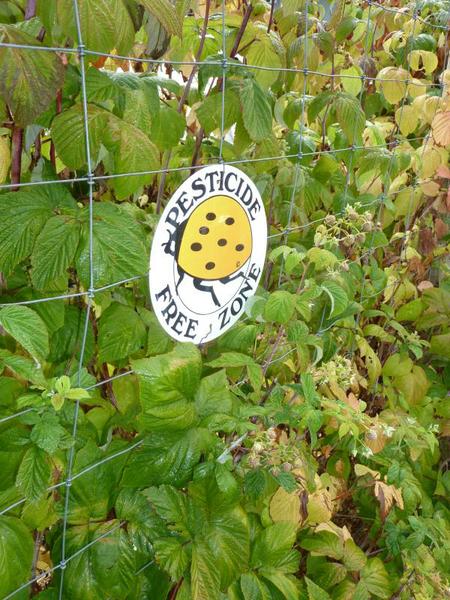
Figure 8–21. Using IPM techniques can help many gardeners avoid the use of pesticides.
Kathleen Moore CC BY 2.0
Further Reading
Citizen's Guide to Pest Control and Pesticide Safety. Washington, DC: United States Environmental Protection Agency, 1995. PDF file. EPA 730-K-95-001.
Cloyd, Raymond A., Philip L. Nixon, and Nancy R. Pataky. IPM for Gardeners: A Guide to Integrated Pest Management. Portland, Oregon: Timber Press, Inc., 2004. Print.
Marshall Bradley, Fern, Barbara W. Ellis, and Deborah L. Martin, eds. The Organic Gardener's Handbook of Natural Pest and Disease Control: A Complete Guide to Maintaining a Healthy Garden and Yard the Earth-Friendly Way. New York: Rodale Press, Inc., 2009. Print.
Olkowski, William, et al. The Gardener's Guide to Common-Sense Pest Control: Completely Revised and Updated. Newtown, Connecticut: The Taunton Press, Inc., 2013. Print.
Applying Pesticides Correctly: (Virginia Core Manual): A Guide for Private Applicators, Commercial Applicators, and Registered Technicians in Virginia. Blacksburg, Virginia: Virginia Cooperative Extension Service, 2012. Print. Publication 456-210
Wamsley, Mary Ann and Donna M. Vermeire, eds. Ornamental and Turfgrass Pest Control. Washington, DC: United States Environmental Protection Agency, 1976. PDF file. EPA 730-R-76-104.
Chapter Text Hyperlinks
North Carolina Extension Gardener Plant Toolbox
North Carolina Agricultural Chemicals Manual
For More Information
NC State Resources
- Center for Integrated Pest Management
- Diagnostic Tables
- How to Submit a Sample to the Plant Disease and Insect Clinic
- IPM Resources for the Field Practitioner
- Insect Notes
- Integrated Pest Management Portal
- Pesticide Safety Education Program
- Plant Disease Factsheets
- Pollinator Resouces
More NC State Resources
Other Resources
- Carolinas Poison Center
- EXtension TOXicology NETwork (EXTOXNET)
- IPM Basics, by University of Maryland Extension (5:55 minutes)
- IPM, National Pesticide Information Center
- IPM Strategies and Production Practices for Managing Pests, by University of Kentucky (56:33 minutes)
- Laundering Pesticide-Soiled Clothing
- Pesticides, NC Department of Health and Human Services, Occupational & Environmental Epidemiology
- Southern IPM Center
- What is Integrated Pest Management (IPM)?, by National Pest Management Association (6:45 minutes)
Contributors
Authors:
Steven Frank, Associate Professor and Extension Specialist, Department of Entomology and Plant Pathology
Lucy Bradley, Associate Professor and Extension Specialist, Urban Horticulture, NC State University; Director, NC State Extension Master Gardener program
Kathleen Moore, Urban Horticulturist, Department of Horticultural Science
Contributions by Extension Agents: David Goforth, Danelle Cutting, Tim Mathews, Alison Arnold, Pam Jones, Peg Godwin
Contributions by Extension Master Gardener Volunteers: Louise Romanow, Linda Alford, Patricia Brown, Marjorie Rayburn, Jackie Weedon, Karen Damari, Connie Schultz, Sue Davis, Edna Burger, Joanne Celinski, Caro Dosé
Content Editors: Lucy Bradley, Associate Professor and Extension Specialist, Urban Horticulture, NC State University; Director, NC State Extension Master Gardener program; Kathleen Moore, Urban Horticulturist
Copy Editor: Barbara Scott
Based in part on text from the 1998 Extension Master Gardener manual prepared by:
- Erv Evans, Extension Associate, Department of Horticultural Science
- Mike Linker, IPM Coordinator, Department of Crop Science
- Steve Toth, Extension Specialist, Department of Entomology
- Stephen Bambara, Extension Specialist, Department of Entomology
- James R. Baker, Extension Specialist, Department of Entomology
- Ken Sorensen, Extension Specialist, Department of Entomology
How to cite this chapter:
Frank, S., L.K. Bradley, and K.A. Moore. 2022. Integrated Pest Management, Chapter 8. In: K.A. Moore, and L.K. Bradley (eds). North Carolina Extension Gardener Handbook, 2nd ed. NC State Extension, Raleigh, NC. <http://content.ces.ncsu.edu/8-integrated-pest-management-ipm>
Publication date: Feb. 1, 2022
AG-831
Other Publications in North Carolina Extension Gardener Handbook
- 1. Soils & Plant Nutrients
- 2. Composting
- 3. Botany
- 4. Insects
- 5. Diseases and Disorders
- 6. Weeds
- 7. Diagnostics
- 8. Integrated Pest Management (IPM)
- 9. Lawns
- 10. Herbaceous Ornamentals
- 11. Woody Ornamentals
- 12. Native Plants
- 13. Propagation
- 14. Small Fruits
- 15. Tree Fruit and Nuts
- 16. Vegetable Gardening
- 17. Organic Gardening
- 18. Plants Grown in Containers
- 19. Landscape Design
- 20. Wildlife
- 21. Youth, Community, and Therapeutic Gardening
- Appendix A. Garden Journaling
- Appendix B. Pesticides and Pesticide Safety
- Appendix C. Diagnostic Tables
- Appendix D. Garden Tools
- Appendix E. Season Extenders and Greenhouses
- Appendix F. History of Landscape Design
- Appendix G. Permaculture Design
- Appendix H. Community Gardening Resources
- Appendix I. More NC State Resources
- Glossary
N.C. Cooperative Extension prohibits discrimination and harassment regardless of age, color, disability, family and marital status, gender identity, national origin, political beliefs, race, religion, sex (including pregnancy), sexual orientation and veteran status.

